When Dina told us about the Graeco-Roman Museum, we were eager to visit because it would provide the perfect segway from our exploration of Ancient Egypt to the next stop on our trip, Greece. We didn’t know until we arrived how fortunate we were to be among the first visitors to a 100-plus year-old museum that is essentially brand new. What does that mean?
The original Graeco-Roman Museum of Alexandria opened in 1892 at its original 5-room location. It moved to its current location in 1895 with its white neoclassical façade and six columns. In 2005, the museum closed for renovation and after nearly 20 years of renovation, hidden behind scaffolding and plastic sheeting, it finally reopened its doors in October 2023. That means that our visit on November 29, 2023 was just over one-month after its long-awaited Grand Opening. Although our timing for the as-yet unannounced opening of the GEM (Grand Egyptian Museum) in Cairo was not fortuitous, we were lucky in this instance.
With 30 galleries, the museum is not huge but the exhibits are well-curated and with Dina by our side, we spent a few hours at the museum consolidating and extending our understanding of the rich interwoven tapestry of Greek, Roman and Egyptian history and culture in Alexandria and the Mediterranean.
One of the first exhibits we viewed was the stele from Thonis-Heracleion, a well-known coastal trading town in Pharonic times that predates the founding of Alexandria. A pair of near-identical stele are displayed. One, the Thonis-Heracleion stele and the other, identical except for the name of the city, was discovered in 1899 in Naukratis, another trading post south-east of Alexandria. Both are inscribed with information about taxation and tariffs for traders. Interestingly, the discovery of the Thonis-Heracleion stele served to dispel a common belief among archaelogists at the time that Thonis and Heracleion were the names of two different towns. No, actually they were the name of the same place in two languages, Egyptian (Thonis) and Greek (Heracleion), underscoring the close interwoven culture and trade between the two societies.
Dina walked us through the first floor filled with artifacts from the Pharonic times. Most memorable were the statues that we could plainly see transforming to include Greek aesthetics and sensibilities. Some, like the statue of Ptolemy X, incorporated elements of both Ancient Egyptian and Greek styles while others showed the Hellenistic style completely eclipsing the Egyptian.
We were all transfixed by a large mosaic piece hanging on the wall of Queen Berenike II, wife of Ptolemy III. She is depicted as the personification of Alexandria with ships on her head and an anchor-shaped broach. Her bulging eyes stare down at visitors and the kids confirmed after empirical observation that regardless of where they stood, it looked like she was glaring at them.
Dina took us through the significant exhibits and dazzled us with myths, legends, stories and personal experiences to go with nearly every artifact. As we admired the busts of Mark Antony, Queen Cleopatra VII and their children Alexander Helios and Cleopatra Selene, Dina captivated all of us with the story of Cleopatra the end of the Pharonic age. She highlighted that although Cleopatra would always be remembered for her beauty and relationships with powerful men, she was in her own right, a powerful, educated and accomplished woman who spoke nine languages, studied and even authored on subjects as wide ranging as drugs and cosmetics, medicine, mathematics and toxicolog, and let us not forget – ruled a kingdom for more than two decades in a male-dominated world.
The museum has a number of installations so visitors can see the artifacts in context. There is an impressive mosaic floor with other spatial features that were found in a villa in Alexandria. The center depicts Medusa with her hair of snakes. We passed by and admired the Apis Bull carved out of black granite while DY practiced his photography skills.
We walked through a reconstructed shrine excavated in Fayoum and dedicated to the Crocodile-god Pnepheros. Further on, there were some unusual looking mummies on display that resembled nothing like those from the New Kingdom that we saw in the mummy hall at NMEC (National Museum of Egyptian Civilization) in Cairo. The Ptolemaic mummies are wrapped in an elaborate diamond pattern and the one on display had a portrait of the deceased covering the head.
We breezed through the other Roman and Byzantine areas of the museum, stopping only to look at things that caught our eye or piqued our curiosity. There were exhibits of earthenware jars and jugs of all different sizes and shapes, extensive coin collections, small crafts and clay figurines. We were amused to see a glass case full of cat figures in various poses and engaged in different activities. Together, they show the lifestyle, interests and extent of trade around the region.
As we were leaving, we glanced into a room of archaeologists or curators working to catalogue various artifacts that looked to be earthenware vessels. It was interesting to see that they were all women.
On our way out of the museum, we bid farewell to the statue of Isis standing in the shady courtyard where visitors can enjoy a cup of coffee or tea under the warm gaze of a beautiful woman.
We didn’t stay for coffee, but we did stop for lunch at one of Dina’s favorite shwarma places in Alexandria called Gad. It is a chain restaurant that serves super delicious shwarma, pita sandwiches, falafel and other local favorites. The guy slicing the shwarma was friendly and as curious about us as we were of him. He has been slicing shwarma at this location for over 15 years. In typical American fashion, we got the food to go and ate it on the van. It turned out to be one of the simplest and most delicious meals that we’ve had for a long time.
Author
-

Song is the mother of four children. She and her family have stepped away from it all and in September 2023, began traveling the world while homeschooling. Song is an ABC (American born Chinese) and has an undergraduate degree from Cornell and an MBA from Harvard. She is an entrepreneur and an educator. Her hobbies include learning, traveling, reading, cooking and baking, and being with children.


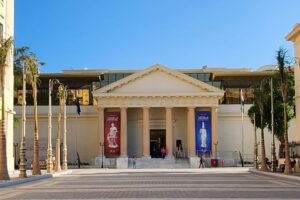

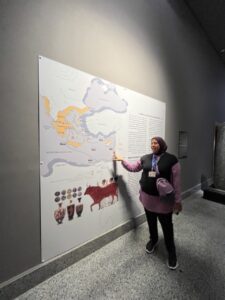




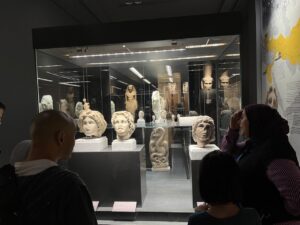

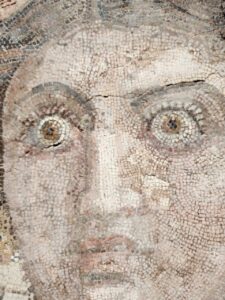
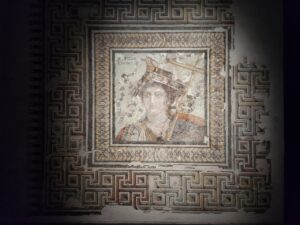
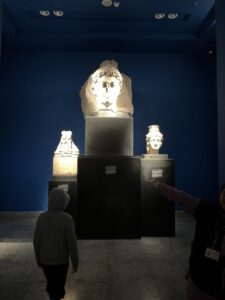
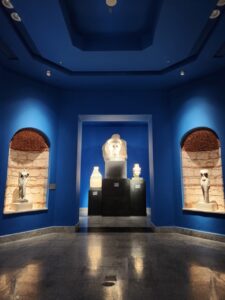


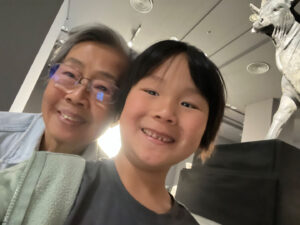
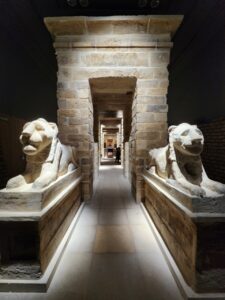
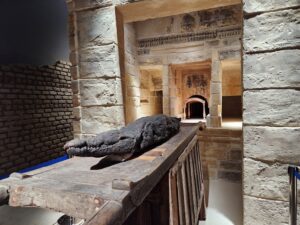

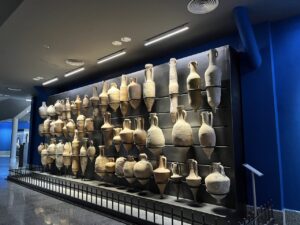
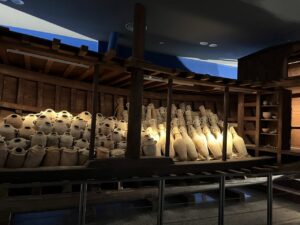



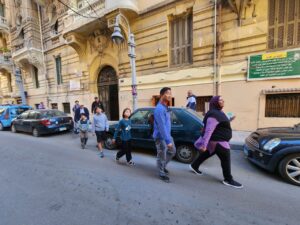
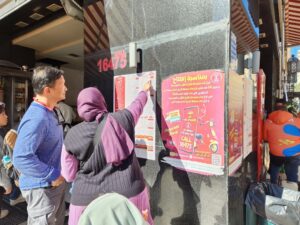

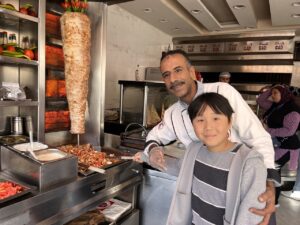
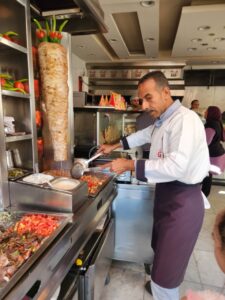
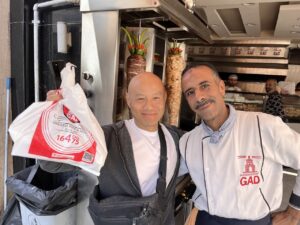
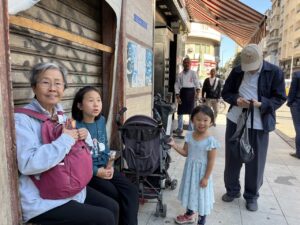
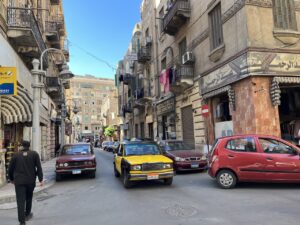
11/29 希臘羅馬博物館
希臘羅馬博館裏,歷史相繫古埃希。
修繕多年才開館,感恩好運好時機。
海底石碑文證實,古埃及名索尼斯。
與同希拉克莱奥,古希臘名同城市。
古埃及到古希臘,神廟遺跡多神話。
文明交融互影響,歷史長河見繁花。